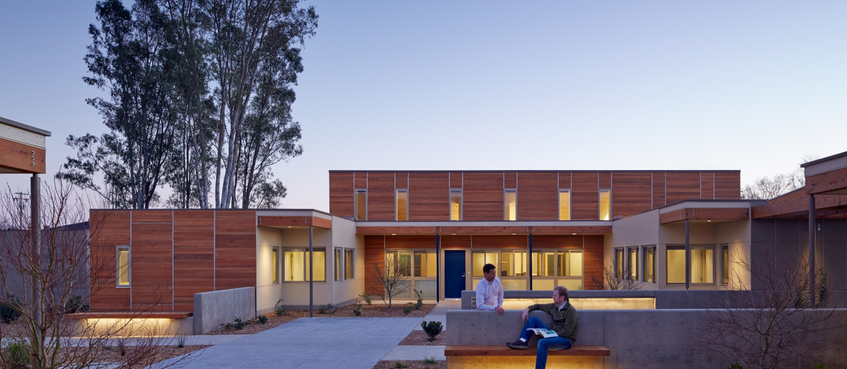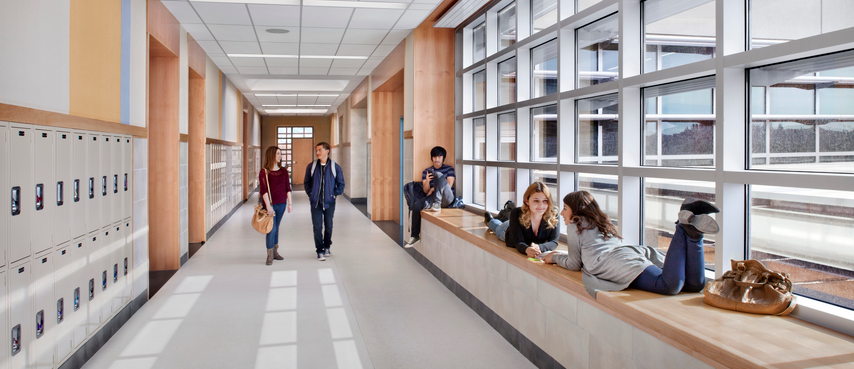Accessible architecture encompasses a broad spectrum of features and elements that aim to remove barriers and create environments that are usable by everyone, regardless of age, mobility, or sensory abilities. Picture public spaces usable by all, fostering a sense of welcome and independence. This is the essence of accessible architecture – the practice of designing buildings and environments that cater to the needs of people with disabilities, while also benefiting the broader community.

The Heart of Accessible Architecture
Accessible architecture goes beyond simply following regulations. It’s about creating inclusive spaces that celebrate human diversity and empower everyone to participate fully in life. Here’s why it matters:
Equal Opportunities
Accessible design ensures everyone gets a fair shot. People with disabilities have the same opportunities to work, learn, shop, and enjoy public spaces as everyone else.
Independence and Dignity
Proper accessibility features empower individuals with disabilities to navigate their surroundings independently, fostering a sense of self-reliance and dignity.
Economic Benefits
Accessible design isn’t just about inclusivity; it’s good for business. Wider doorways, ramps, and clear signage are convenient for everyone – parents with strollers, people carrying heavy loads, and older adults. This caters to a broader customer base and potentially boosts businesses.
Key Features of Accessibility
Accessible architecture encompasses a vast array of features to address various needs. Let’s delve into some key elements:
Physical Accessibility
This includes ramps with proper gradients, automatic doors, elevators with accessible controls and audio announcements, wider doorways, and grab bars in restrooms. Ensuring adequate space for wheelchairs and other mobility aids is essential.
Sensory Accessibility
Good lighting, clear signage with contrasting colours and large fonts, and Braille markings on elevators and buttons are crucial for people with vision impairments. Amplified sound systems, assistive listening devices, and visual alerts for fire alarms cater to those with hearing difficulties.
Cognitive Accessibility
Simple floor plans, clear signage with pictograms, and predictable layouts can help people with cognitive disabilities navigate spaces more easily.
Technological Accessibility
Websites and digital interfaces should be compatible with screen readers and offer options for text size and colour adjustments.
Accessible Public Spaces
The principles of accessible design extend beyond buildings. Public transportation systems with ramps, lifts, and audio announcements are crucial. Pedestrian walkways should be free of obstacles and have tactile paving warnings for people with vision impairments. Parks and recreational areas need accessible pathways, restrooms, designated seating areas, and playgrounds with inclusive equipment.
Universal Design
The most effective approach to accessibility is through “universal design.” This philosophy aims to create buildings and products that are usable by everyone, regardless of ability, from the very beginning. This eliminates the need for later modifications and ensures inclusivity is ingrained in the design process from the very first sketch.
Challenges and Considerations in Accessible Design
While the benefits are undeniable, implementing accessible design can present some challenges:
Cost
Incorporating certain features can add to initial construction costs. However, these costs can be offset by the long-term benefits of a broader user base and reduced need for retrofitting later.
Existing Buildings
Retrofitting older buildings to meet accessibility standards can be complex and expensive. However, prioritizing accessibility features during renovations and considering low-cost solutions can make a significant difference.
Lack of Awareness
Sometimes, a lack of awareness or understanding regarding accessibility needs can hinder its implementation. Education and training for architects, builders, and the general public are crucial for wider adoption.
Building Bridges of Understanding
Accessible design advocates play a vital role in raising awareness and promoting inclusive practices. Organizations like the American Institute of Architects (AIA) and the Disability Rights Education & Defense Fund (DREDF) work towards ensuring buildings are designed for everyone. Individuals with disabilities can also be powerful advocates by sharing their experiences and highlighting the need for accessible design.
The Impact of Accessible Architecture
By incorporating accessible features, we create a world where everyone feels welcome and included. Imagine:
- Parents with young children easily navigate libraries and museums.
- People using wheelchairs can access courthouses and government buildings independently.
- Older adults can safely use public transportation and enjoy parks with accessible walking paths.
Accessible architecture creates a sense of belonging and fosters a vibrant and inclusive society where everyone can participate to their full potential.
How You Can Make a Difference
Everyone can play a role in promoting accessible design. Here are some ways you can contribute:
Educate Yourself
Learn more about accessible design principles and the challenges faced by people with disabilities.


